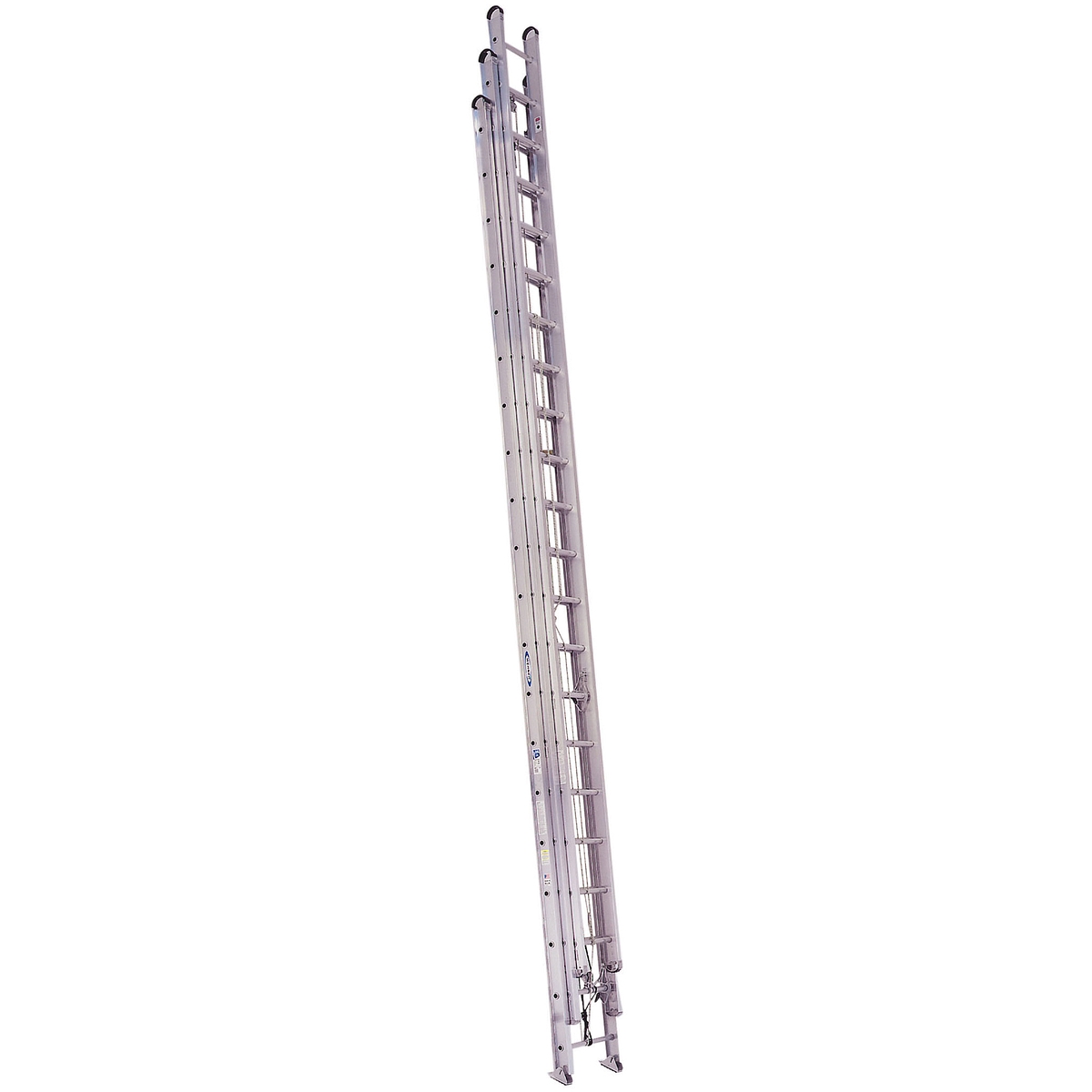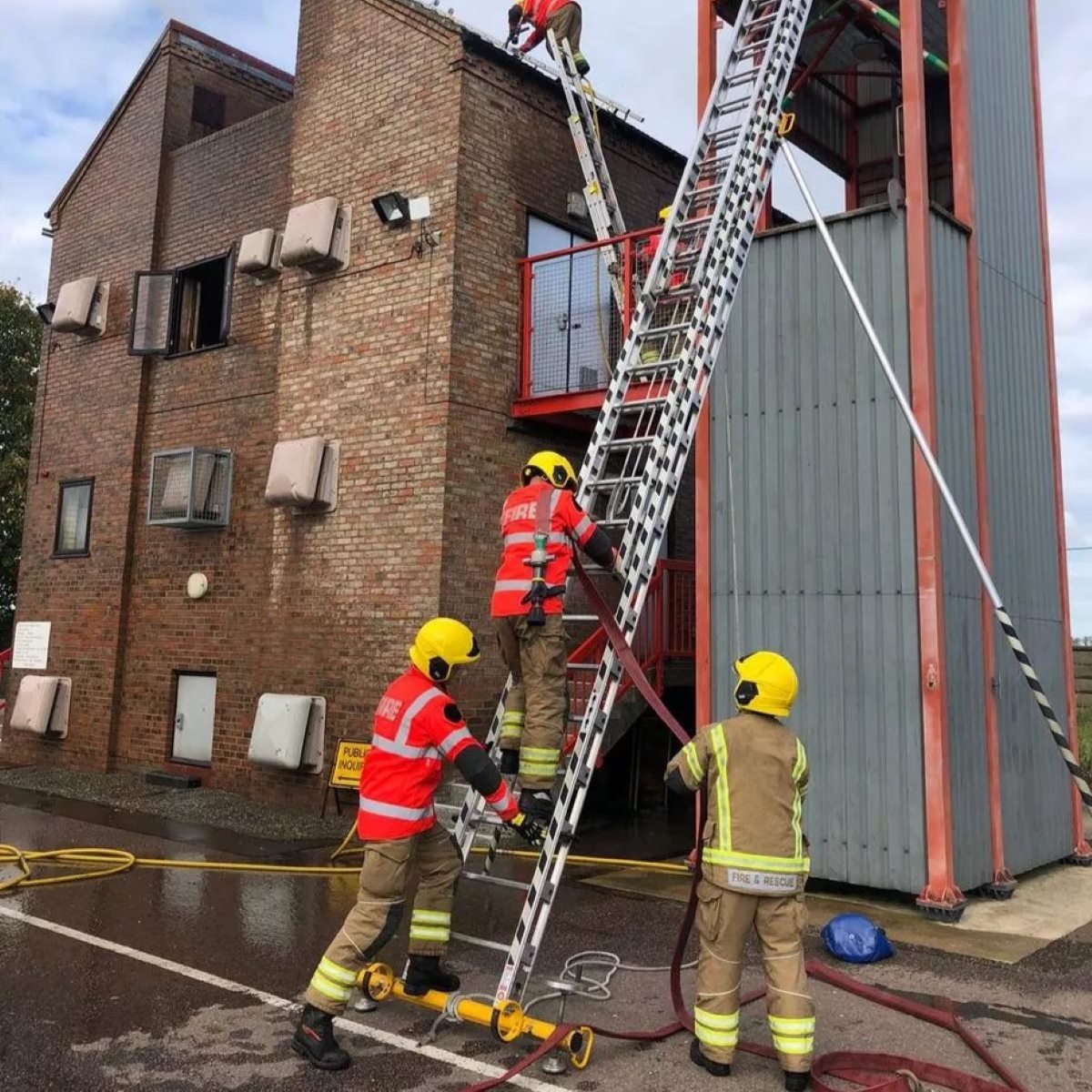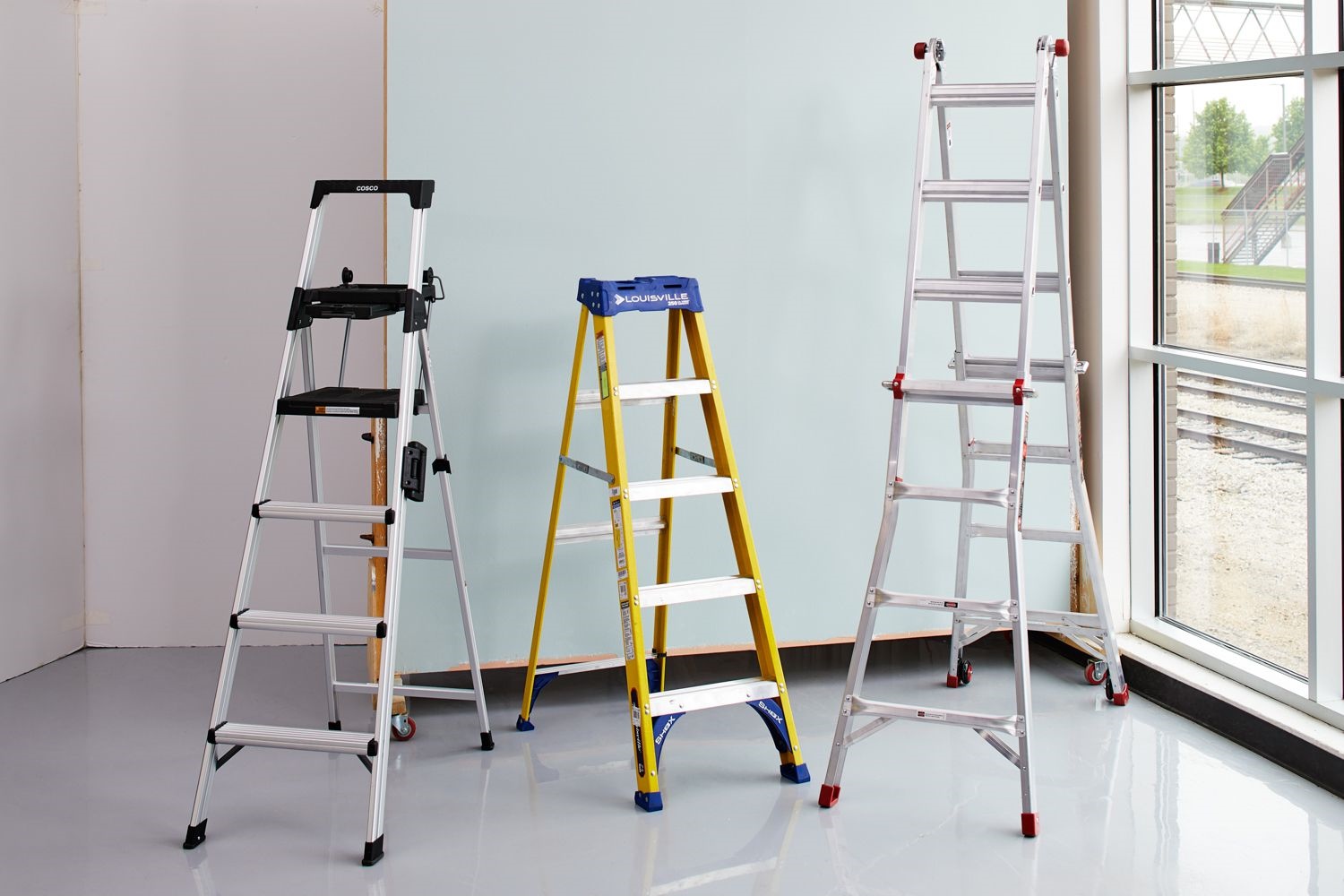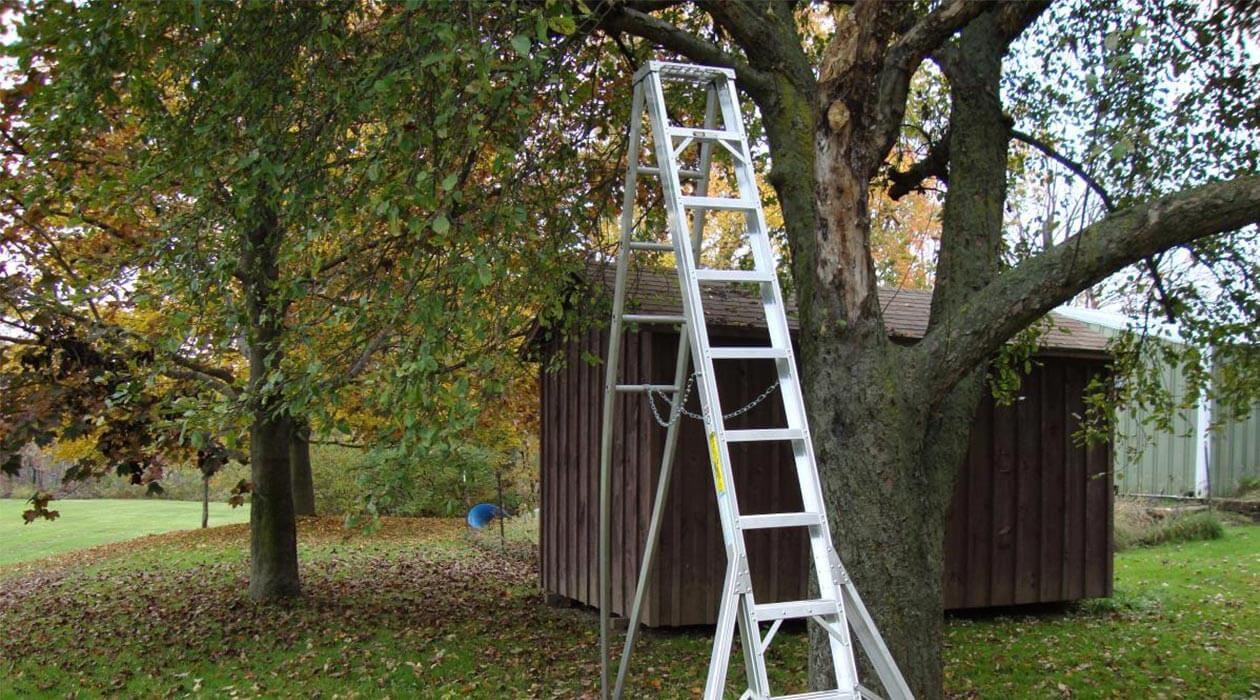Home>Articles>What Is The Maximum Length Of A Non-Self-Supporting Single Ladder


Articles
What Is The Maximum Length Of A Non-Self-Supporting Single Ladder
Modified: February 22, 2024
Learn about the maximum length of a non-self-supporting single ladder in this informative article. Discover the regulations and safety considerations.
(Many of the links in this article redirect to a specific reviewed product. Your purchase of these products through affiliate links helps to generate commission for Storables.com, at no extra cost. Learn more)
Introduction
In the world of construction and maintenance work, ladders are often an essential tool that allows workers to reach heights safely and efficiently. However, it is important to understand the limitations and guidelines associated with different types of ladders. In this article, we will focus on non-self-supporting single ladders and explore the maximum length allowed for their safe use.
A non-self-supporting single ladder, also known as a leaning ladder, is a type of ladder that requires support against a wall or another stable structure in order to remain upright. These ladders generally consist of two parallel side rails connected by rungs, with the bottom end fitted with non-slip feet to provide stability. They are commonly used for tasks such as painting, cleaning windows, and accessing higher areas in buildings.
When it comes to determining the maximum length of a non-self-supporting single ladder, several factors come into play. These factors include the ladder material, the duty rating, the angle of inclination, and the type of work being performed. Understanding and adhering to safety regulations and guidelines is crucial to ensure the ladder is used safely and to prevent accidents or injuries.
Regulatory bodies such as the Occupational Safety and Health Administration (OSHA) in the United States and the Health and Safety Executive (HSE) in the United Kingdom have established specific regulations to govern ladder usage. These regulations aim to minimize the risk of falls and promote safe working practices.
When determining the maximum length of a non-self-supporting single ladder, it is important to consider the angle of inclination. The ideal angle recommended by OSHA and HSE is 75.5 degrees (or a 4:1 ratio). At this angle, the ladder provides optimal stability and reduces the potential for accidents.
Another factor to consider is the duty rating of the ladder. Duty ratings range from type III (household use, maximum load of 200 pounds) to type IA (extra heavy-duty industrial use, maximum load of 300 pounds). Selecting a ladder with an appropriate duty rating for the intended use is essential to ensure safety.
Additionally, the material of the ladder plays a significant role in determining its maximum length. Aluminum ladders are lightweight and resistant to corrosion, making them a popular choice. However, they may have lower weight capacities compared to fiberglass ladders, which are more durable and can handle heavier loads.
It is worth noting that different countries and regions may have specific regulations and guidelines regarding ladder usage and maximum lengths. Therefore, it is essential to consult local safety authorities or industry standards to ensure compliance.
In the next section, we will delve into specific safety regulations and guidelines governing non-self-supporting single ladders to further understand their maximum length requirements.
Key Takeaways:
- Prioritize safety by considering factors such as angle of inclination, duty rating, and weight capacity when determining the maximum length of non-self-supporting single ladders. Adhering to safety regulations and guidelines is crucial for preventing accidents and injuries.
- Understanding the specific circumstances of the task at hand and consulting safety professionals can help workers determine the maximum length of a non-self-supporting single ladder, ensuring safe and efficient work at heights. Familiarizing with regulatory guidelines and manufacturer’s recommendations is essential for creating a safe working environment.
Read more: What Is The Working Length Of A Ladder
Definition of a Non-Self-Supporting Single Ladder
A non-self-supporting single ladder, also known as a leaning ladder, is a type of ladder that requires support against a stable structure, such as a wall or a building, in order to remain upright. Unlike a self-supporting ladder, which can stand on its own, a non-self-supporting single ladder relies on external support to prevent it from tipping over.
This type of ladder typically consists of two parallel side rails connected by rungs or steps, forming a secure and stable structure. The side rails may be made of various materials, such as aluminum or fiberglass, depending on the ladder”s intended use and the weight it needs to support.
Non-self-supporting single ladders are designed for tasks that require workers to access elevated areas while working against a vertical surface. They are commonly used in residential and commercial settings for activities such as painting, cleaning windows, installing or repairing fixtures, and performing maintenance tasks.
These ladders are available in different lengths to accommodate various working heights. However, it is important to understand that there are limitations to the maximum length that can be safely used. Exceeding the maximum length can compromise stability and increase the risk of accidents, falls, and injuries.
To ensure safety when using a non-self-supporting single ladder, it is crucial to follow the manufacturer”s guidelines and industry standards. These guidelines provide information on ladder ratings, weight capacities, and safe usage practices.
Furthermore, it is essential to understand the angle of inclination for a non-self-supporting single ladder. The angle refers to the degree at which the ladder is leaning against the structure it is supported on. The recommended angle for safe ladder usage is 75.5 degrees or a 4:1 ratio. This angle provides an optimal balance between stability and ease of climbing.
In summary, a non-self-supporting single ladder is a type of ladder that relies on external support against a stable structure to remain upright. It is a versatile tool used for accessing elevated areas while working against a vertical surface. However, it is crucial to adhere to safety guidelines and limitations, including the maximum length, to ensure safe and secure ladder usage.
Factors Affecting Maximum Length
Several factors come into play when determining the maximum length of a non-self-supporting single ladder. Understanding these factors is crucial to ensure the ladder is used safely and to minimize the risk of accidents or injuries.
1. Angle of Inclination: The angle at which the ladder is leaning against the structure is an important factor to consider. The ideal angle recommended by safety authorities is 75.5 degrees or a 4:1 ratio. This angle provides the best balance between stability and ease of climbing. If the ladder is too steep or too shallow, it can compromise stability and increase the risk of tipping over.
2. Duty Rating: The duty rating of a ladder indicates its maximum load capacity. Ladders are classified into different duty ratings, ranging from type III (household use with a maximum load of 200 pounds) to type IA (extra heavy-duty industrial use with a maximum load of 300 pounds). It is important to select a ladder with an appropriate duty rating based on the weight that needs to be supported during the task.
3. Ladder Material: The material of the ladder affects its maximum length and weight capacity. Aluminum ladders are lightweight and resistant to corrosion, making them a popular choice. However, they may have lower weight capacities compared to fiberglass ladders, which are more durable and can handle heavier loads. It is essential to consider the intended use and weight requirements when selecting a ladder material.
4. Type of Work: The type of work being performed on the ladder can also affect the maximum length. Tasks that require additional equipment or materials may add extra weight to the ladder, reducing its maximum length capacity. It is important to consider the total weight on the ladder, including the weight of the worker, tools, and materials, to ensure safe usage.
5. Environmental Factors: Environmental conditions, such as wind and uneven surfaces, can also affect the maximum length of a ladder. Wind can create instability and increase the risk of the ladder tipping over. Uneven surfaces can cause the ladder to wobble or become unstable. It is important to assess the working environment and make necessary adjustments to ensure the ladder is safely secured.
6. Regulatory Guidelines: Different countries and regions may have specific regulatory guidelines governing ladder usage and maximum lengths. It is crucial to consult local safety authorities or industry standards to ensure compliance with these guidelines. These regulations are implemented to minimize the risk of falls and promote safe working practices on ladders.
By considering these factors and adhering to safety regulations, workers can determine the maximum length of a non-self-supporting single ladder that can be safely used for their specific tasks. It is important to prioritize safety and always use ladders within their recommended limits to prevent accidents and injuries.
Safety Regulations and Guidelines
Ensuring the safety of workers when using non-self-supporting single ladders is of utmost importance. Safety regulations and guidelines have been established by regulatory bodies to minimize the risk of accidents and promote safe ladder usage practices. Familiarizing oneself with these regulations is crucial for both employers and workers. Let’s explore some of the key safety regulations and guidelines below.
1. Occupational Safety and Health Administration (OSHA): In the United States, OSHA sets standards and regulations for ladder safety. The OSHA regulations include specific guidelines on ladder types, usage, design, and inspections. These regulations provide valuable information on ladder duty ratings, angle of inclination, weight capacities, and maximum lengths, among others.
2. Health and Safety Executive (HSE): In the United Kingdom, the HSE is responsible for promoting and enforcing safety at work. The HSE offers guidelines and resources on ladder safety, including information on ladder types, ladder selection, safe ladder use, and maintenance. These guidelines are aimed at reducing the risk of falls and ensuring safe working practices.
3. Maximum Load Capacity: One of the key safety considerations is the weight capacity of the ladder. Every ladder is assigned a duty rating that indicates the maximum load it can safely support. It is essential to choose a ladder with an appropriate duty rating that can accommodate the weight of the worker, tools, and materials being used.
4. Angle of Inclination: The angle at which the ladder is positioned against the supporting structure is critical for stability and safety. OSHA and HSE recommend an angle of 75.5 degrees or a 4:1 ratio. This angle ensures an optimal balance between stability and ease of climbing. Proper positioning of the ladder at the recommended angle reduces the risk of tipping over.
5. Inspection and Maintenance: Regular inspection and maintenance of the ladder are crucial for ensuring safety. Inspections should include checking for any defects or damage, such as bent or damaged rungs, loose or missing parts, and cracks in the side rails. Any issues should be addressed promptly, and damaged ladders should be taken out of service until repairs are made.
6. Secure Placement: Proper ladder placement is crucial for stability. The ladder must be placed on a solid, level surface and secured against slipping or sliding. The use of ladder stabilizers or leveling devices can enhance stability on uneven surfaces. Additionally, ladder feet should be clean and free from debris to prevent slipping.
7. Training and Education: Adequate training and education are essential for safe ladder usage. Workers should be trained on ladder safety, including how to select the right ladder, how to set it up properly, and how to climb and descend safely. Training should also cover the proper use of fall protection equipment, such as harnesses and anchor points, when working at heights.
It is important to note that safety regulations and guidelines may vary between countries and regions. It is crucial for employers and workers to familiarize themselves with the specific regulations applicable in their respective areas and ensure compliance with the recommended safety practices.
By following these safety regulations and guidelines, employers and workers can promote a safe working environment and prevent ladder-related accidents and injuries. Protecting the well-being of workers should always be a top priority in any work setting.
When using a non-self-supporting single ladder, the maximum length should not exceed 30 feet for safe and stable use. Always follow the manufacturer’s guidelines for the specific ladder you are using.
Determining the Maximum Length
Determining the maximum length of a non-self-supporting single ladder requires careful consideration of several factors. These factors include the angle of inclination, the duty rating of the ladder, the weight being supported, and the specific safety regulations and guidelines in place. Let’s explore the process of determining the maximum length in more detail.
1. Angle of Inclination: The angle at which the ladder is positioned against the supporting structure is crucial for stability and safety. As mentioned earlier, the recommended angle is 75.5 degrees or a 4:1 ratio. To determine the maximum length, the ladder’s height should be measured from the ground to the upper resting point against the structure. From there, the distance from the base of the ladder to the structure can be calculated using the recommended angle.
2. Duty Rating: The duty rating of the ladder is another important consideration. Each ladder is assigned a duty rating that indicates its maximum load capacity. It is essential to select a ladder with the appropriate duty rating for the weight to be supported. Exceeding the ladder’s weight capacity can compromise its stability and safety.
3. Weight of Worker and Materials: The combined weight of the worker, tools, and materials being used on the ladder must be taken into account. The ladder’s maximum length will vary depending on the weight being supported. It is crucial to ensure that the total weight does not exceed the ladder’s weight capacity, as indicated by the duty rating.
4. Safety Regulations and Guidelines: It is important to consult the relevant safety regulations and guidelines set forth by regulatory bodies such as OSHA or HSE. These regulations may outline specific requirements and limits for ladder usage. Adhering to these guidelines is crucial to ensure compliance and promote safe ladder usage practices.
5. Manufacturer’s Guidelines: Manufacturers often provide specific guidelines and recommendations for their ladders. It is important to review and follow these guidelines when determining the maximum length of a ladder. Manufacturer’s guidelines may cover aspects such as angle of inclination, weight capacity, and specific safety precautions.
6. Professional Consultation: In some cases, it may be beneficial to consult with a safety professional or ladder expert to determine the maximum length. These professionals can provide specific guidance based on the particular circumstances and ensure compliance with safety regulations and guidelines.
By considering these factors and following the appropriate safety regulations and guidelines, employers and workers can determine the maximum length of a non-self-supporting single ladder that ensures safe and secure usage. Prioritizing safety is paramount to prevent accidents, falls, and injuries while working at heights.
Read more: Which Ladder Is Self Supporting
Case Studies: Examples of Maximum Length Calculations
To better understand how to calculate the maximum length of a non-self-supporting single ladder, let’s explore a couple of case studies. These examples will illustrate the process of determining the maximum length based on various factors such as the angle of inclination, duty rating, and weight being supported.
Case Study 1: Residential Painting:
Imagine a scenario where a worker needs to paint the exterior of a two-story residential house using a non-self-supporting single ladder. The worker weighs 180 pounds, and they will carry a paint can and other tools weighing approximately 30 pounds. The ladder being used has a duty rating of type II, which can support a maximum load of 225 pounds.
To determine the maximum length, the following steps should be taken:
- Check the manufacturer’s guidelines for any specific instructions or limitations.
- Ensure the ladder is set up on a stable and level surface.
- Calculate the recommended angle of inclination. In this case, it is 75.5 degrees.
- Measure the height from the ground to the upper resting point against the structure.
- Calculate the distance from the base of the ladder to the structure using the recommended angle.
- Consider the weight being supported, which includes the worker (180 pounds) and tools (30 pounds).
- Ensure the total weight does not exceed the ladder’s weight capacity (225 pounds).
Based on these calculations, the maximum length of the ladder for this case study would be determined by considering the weight capacity and the angle of inclination. It is crucial to select a ladder length that ensures stability and safety while accommodating the worker’s reach requirements.
Case Study 2: Commercial Maintenance:
Now, let’s consider a scenario where a maintenance worker needs to access a high ceiling in a commercial building to replace light fixtures. The worker weighs 250 pounds and will be using a ladder with a duty rating of type IA, which can support a maximum load of 300 pounds.
Again, to determine the maximum length in this case study, similar steps should be followed:
- Refer to the manufacturer’s guidelines for any specific instructions or limitations.
- Ensure the ladder is set up on a stable and level surface.
- Calculate the recommended angle of inclination (75.5 degrees).
- Measure the height from the ground to the upper resting point against the structure.
- Calculate the distance from the base of the ladder to the structure using the recommended angle.
- Consider the weight being supported, which includes the worker (250 pounds) and any equipment or tools being used.
- Ensure the total weight does not exceed the ladder’s weight capacity (300 pounds).
Based on these calculations, the maximum length of the ladder for this case study would be determined similarly, taking into account the weight capacity and the angle of inclination. It is essential to select a ladder length that allows the worker to safely and comfortably reach the intended work area.
These case studies illustrate the importance of considering factors such as weight capacity, angle of inclination, and safety guidelines when determining the maximum length of a non-self-supporting single ladder. By following these calculations and being mindful of safety precautions, workers can ensure the ladder they use is suitable for the task at hand and minimize the risk of accidents or injuries.
Conclusion
When it comes to using non-self-supporting single ladders, understanding the maximum length allowed is crucial for ensuring safety and preventing accidents. By considering factors such as the angle of inclination, duty rating, weight being supported, and adhering to safety regulations and guidelines, workers can determine the maximum length of a ladder that is safe and appropriate for their specific tasks.
Regulatory bodies like OSHA and HSE have established specific guidelines and regulations to promote ladder safety. These guidelines provide valuable information on ladder selection, angle of inclination, weight capacities, and maximum lengths, among others. It is important for employers and workers to familiarize themselves with these regulations and ensure compliance to create a safe working environment.
The duty rating of the ladder, which indicates its maximum load capacity, should be taken into account. Employees must select a ladder with an appropriate duty rating based on the weight that needs to be supported. Exceeding the ladder’s weight capacity can compromise stability and increase the risk of accidents.
The angle of inclination is another crucial factor to consider when determining the maximum length of a ladder. The recommended angle is typically 75.5 degrees or a 4:1 ratio. Proper positioning of the ladder at the recommended angle ensures optimal stability and reduces the risk of tipping over.
Additionally, the weight of the worker and any tools or materials being used on the ladder should be considered. The combined weight must not exceed the ladder’s weight capacity. It is crucial to prioritize safety and ensure that the ladder is not overloaded, as this can compromise stability and lead to accidents or injuries.
By following safety regulations, consulting manufacturer’s guidelines, and considering the specific circumstances of the task at hand, workers can determine the maximum length of a non-self-supporting single ladder that enables them to work at heights safely and efficiently.
Remember, each case may have unique requirements, and it is essential to consult with safety professionals or ladder experts when necessary. Prioritizing safety, following guidelines, and staying informed will help prevent ladder-related accidents and ensure a safe working environment for all.
Frequently Asked Questions about What Is The Maximum Length Of A Non-Self-Supporting Single Ladder
Was this page helpful?
At Storables.com, we guarantee accurate and reliable information. Our content, validated by Expert Board Contributors, is crafted following stringent Editorial Policies. We're committed to providing you with well-researched, expert-backed insights for all your informational needs.















0 thoughts on “What Is The Maximum Length Of A Non-Self-Supporting Single Ladder”